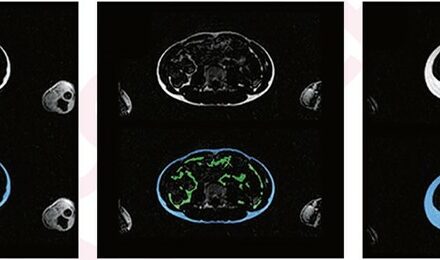Implantable monitors can help physicians track changing conditions inside a patient’s body. But to date, most implantable monitors have required expensive, high-tech detectors, such as CT scans or MRI. Now, researchers in Australia have created the world’s first ultrasound biosensor.
The team, led by Simon Corrie, PhD, and Kristian Kempe, PhD, from the ARC Centre of Excellence in Bio-Nano Science at Monash University in Melbourne, have developed a nontoxic nanoparticle consisting of a silica core coated in a polymer that alters its stiffness in response to changes in pH. These changes in stiffness can be detected by ultrasound.
Using the monitors to monitor pH levels in tumors, for example, could give physicians a noninvasive method of monitoring how well a chemotherapy treatment is working, and dosages could be adjusted based on individual’s specific needs.
The researchers predict that in the near future they will be able to track more complex biomarkers such as oxygen levels in tissues or disease-related proteins. The new technology may also make it easier to monitor patients in remote areas with limited access to big hospital facilities.
The technology has been tested in an animal model to detect changes in pH levels. It will now be tested in an animal models of disease to determine whether it can accurately monitor rapidly changing pH levels. The goal, according to the researchers, is to give clinicians the power of being able to have a patient sit in a chair and, as they are infusing the drugs, using commonly available ultrasound to monitor drug levels or organ response in real-time, adjusting dosages as a function of the patient’s needs.
The study was published in the journal ACS Sensors.






